The Danish Chair
/Part of the collection of modern chairs at Designmuseum Danmark, has been moved into a newly refurbished space in one of the long narrow galleries in the south wing to the right of the entrance.
The new display is stunning and with each chair shown in a self-contained box and with good lighting and clear succinct labels it is possible to really appreciate each piece of furniture.
The chairs are arranged on three levels … the middle row at about eye level, the lower chairs angled up and the upper tier angled down slightly so the gallery has something of the feel of a barrel shape or barrel vault and each chair is angled to optimise the view point for the visitor. Of course, there are some down sides in that it is not as easy to get a sense of the chair as a three-dimensional work but this new arrangement does let you get very close to look at details and for the middle and upper rows it is possible for the first time here in the museum to see the underside of those chairs if you are interested to see how they are constructed.
In the first room there is a short assessment of the place of iconic chair designs in Danish design history with early and foreign chairs - including a Shaker chair from America - that put these designs into a wider context.
There is a Wegner chair before it is assembled to show just how complex the parts and the joints and construction details of a chair can be and there is a clear panel with graphics to show how, for the first time in the museum, the chairs have been displayed by type or typology. So here the groups go from the Folding chairs and stool, to a group of Easy Chairs; then Windsor chairs (essentially chairs with vertical rails across the back) Chippendale chairs (with horizontal rails and often with arms) then a group derived more closely from the Shaker chairs, the distinct Chinese chair and steam-bent chairs, the Round arm chairs and Klismos chairs (of which The Chair by Wegner is a famous example) and finally Shell chairs.
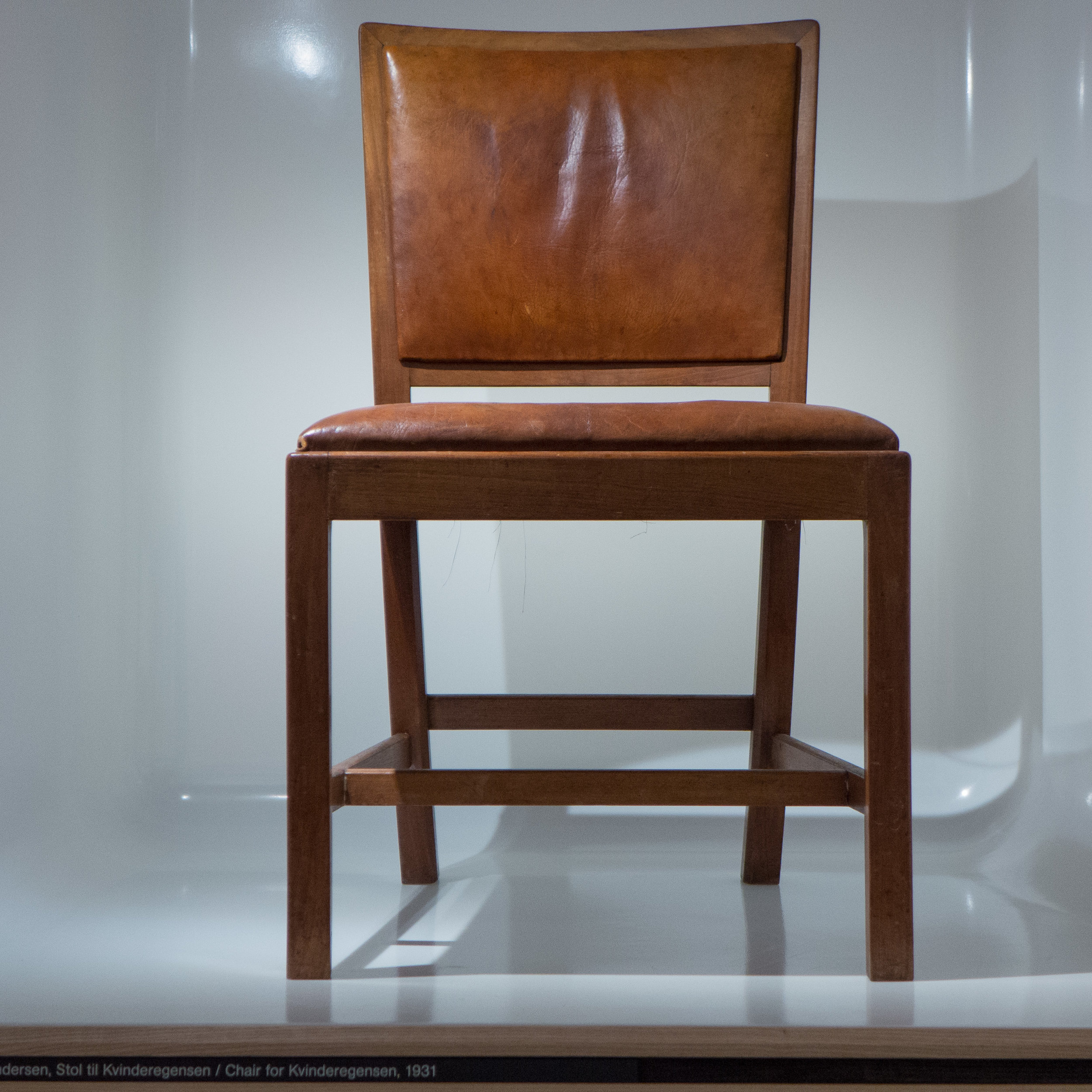
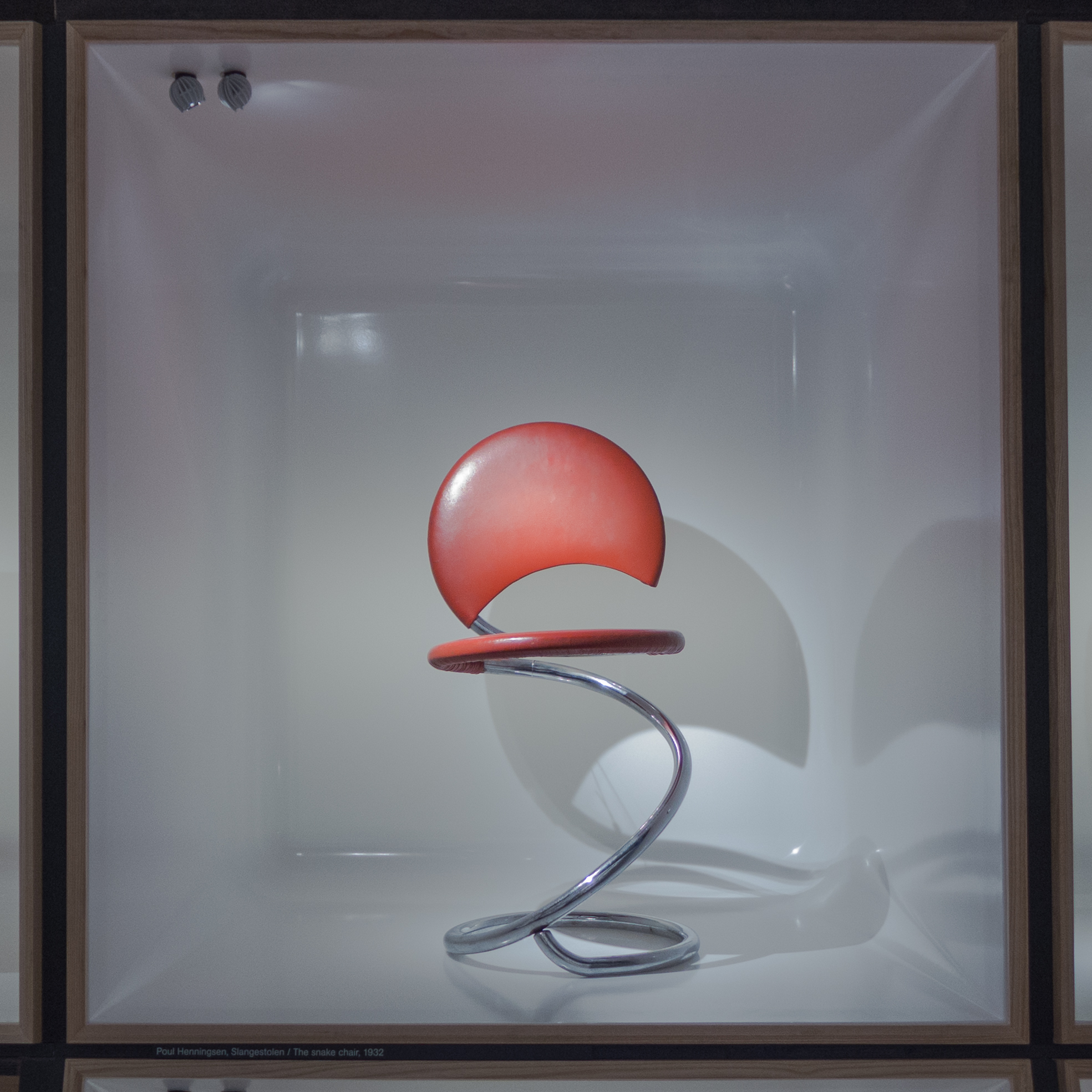
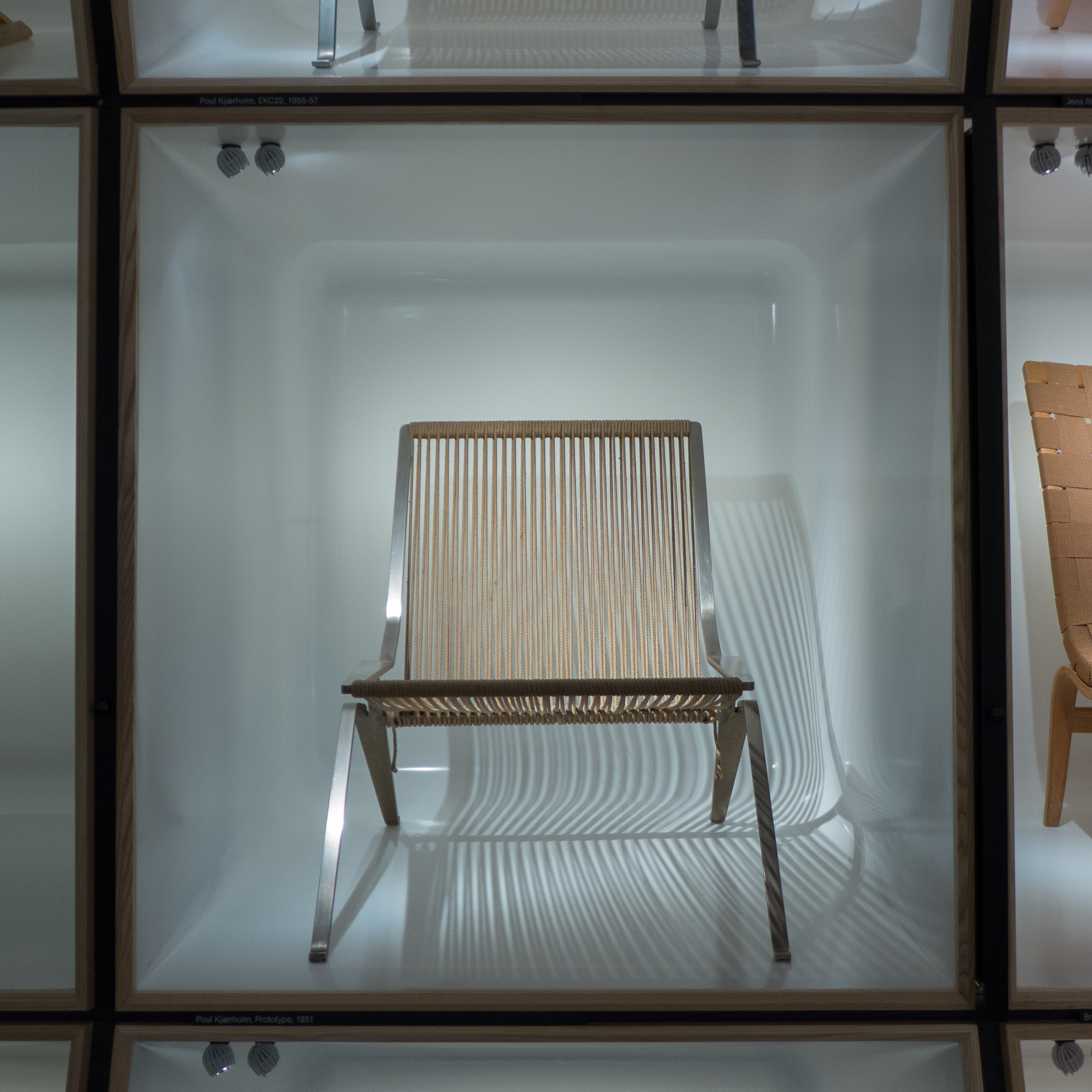
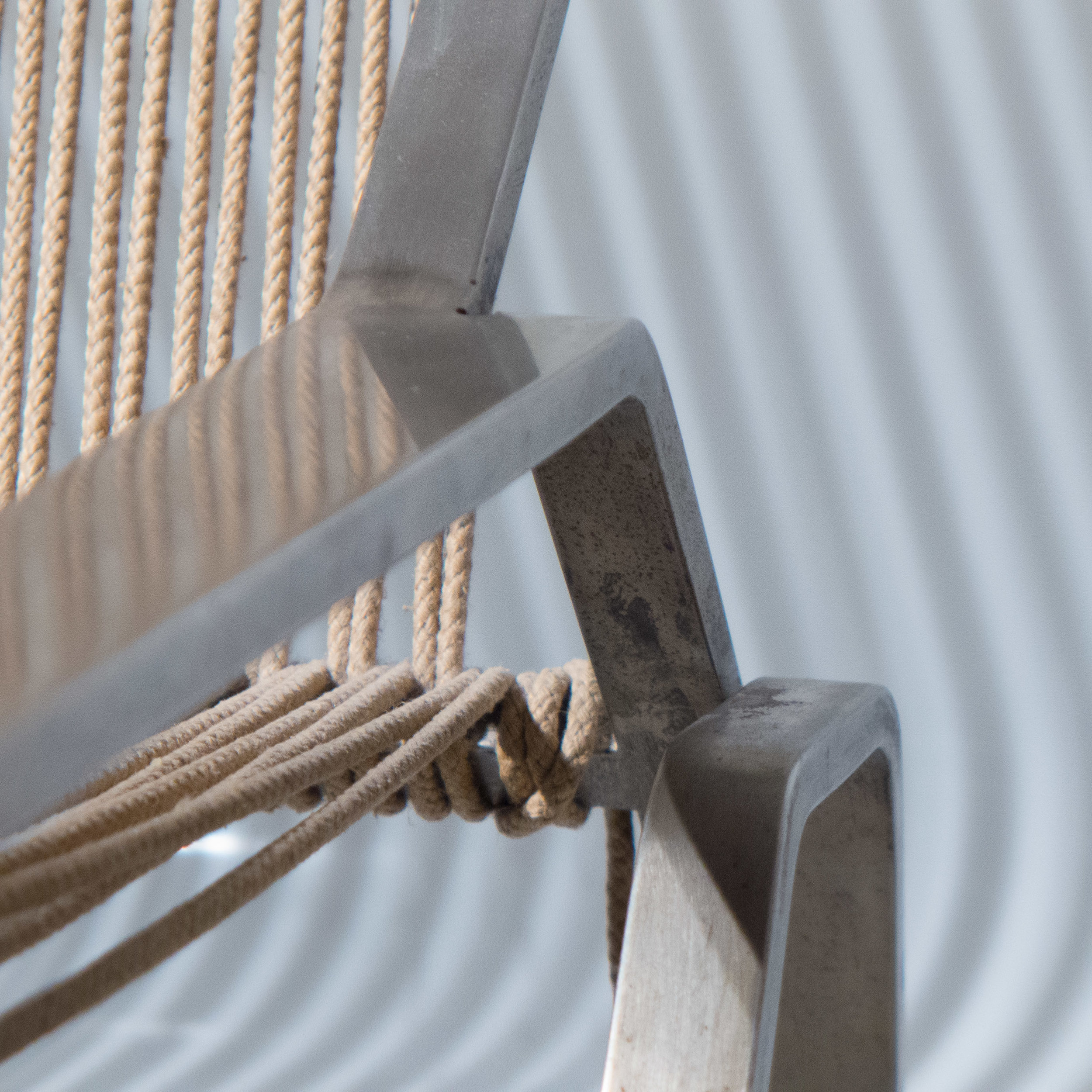

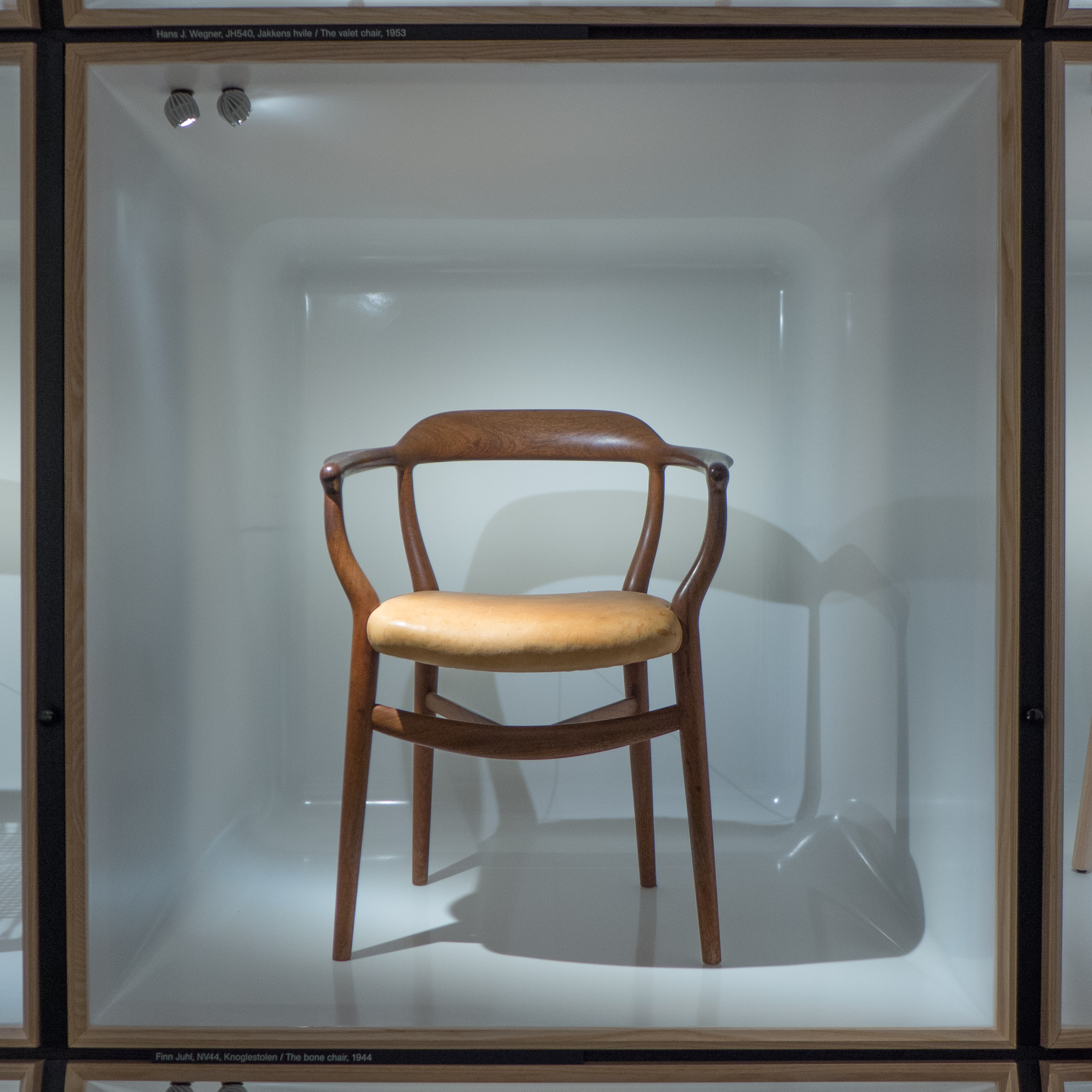
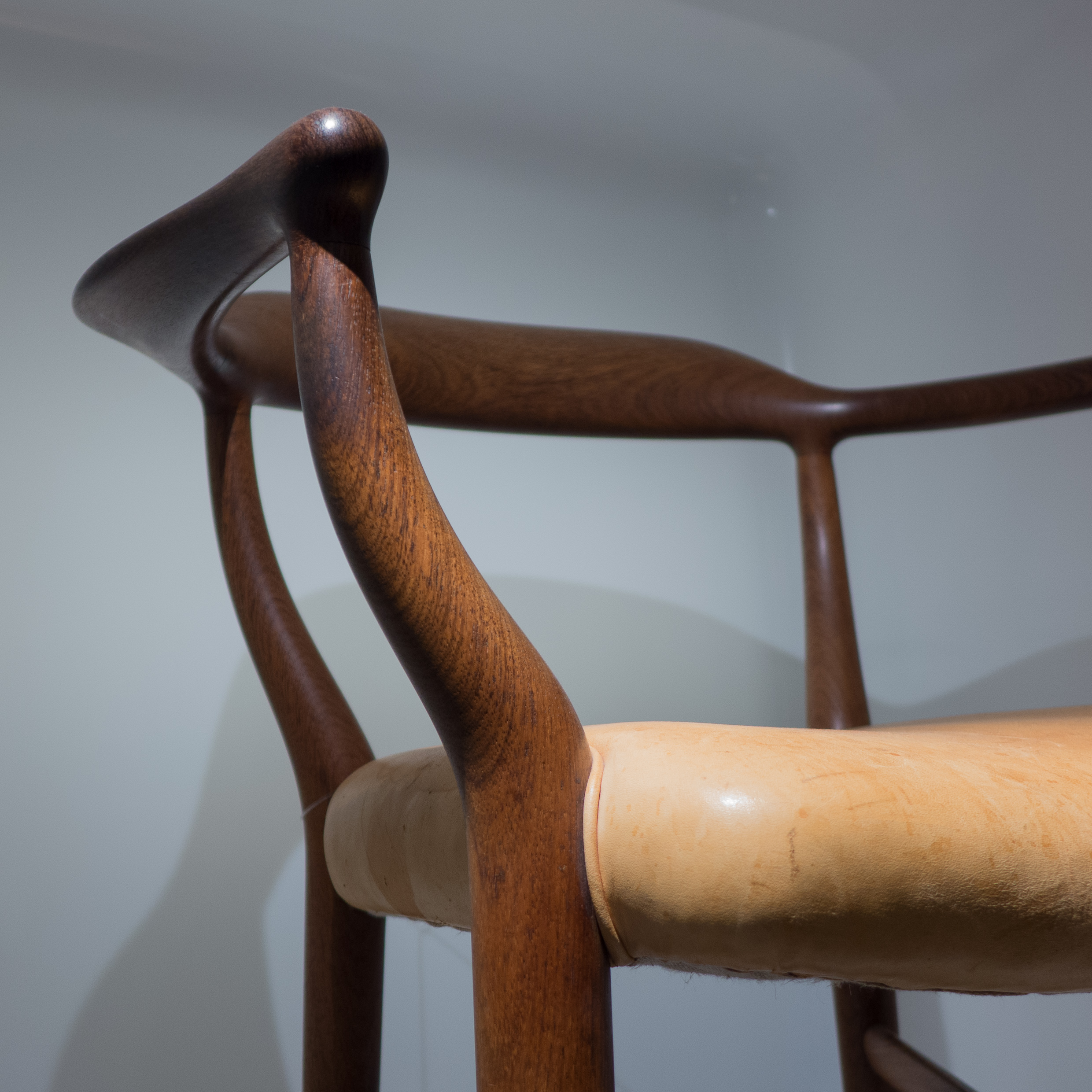
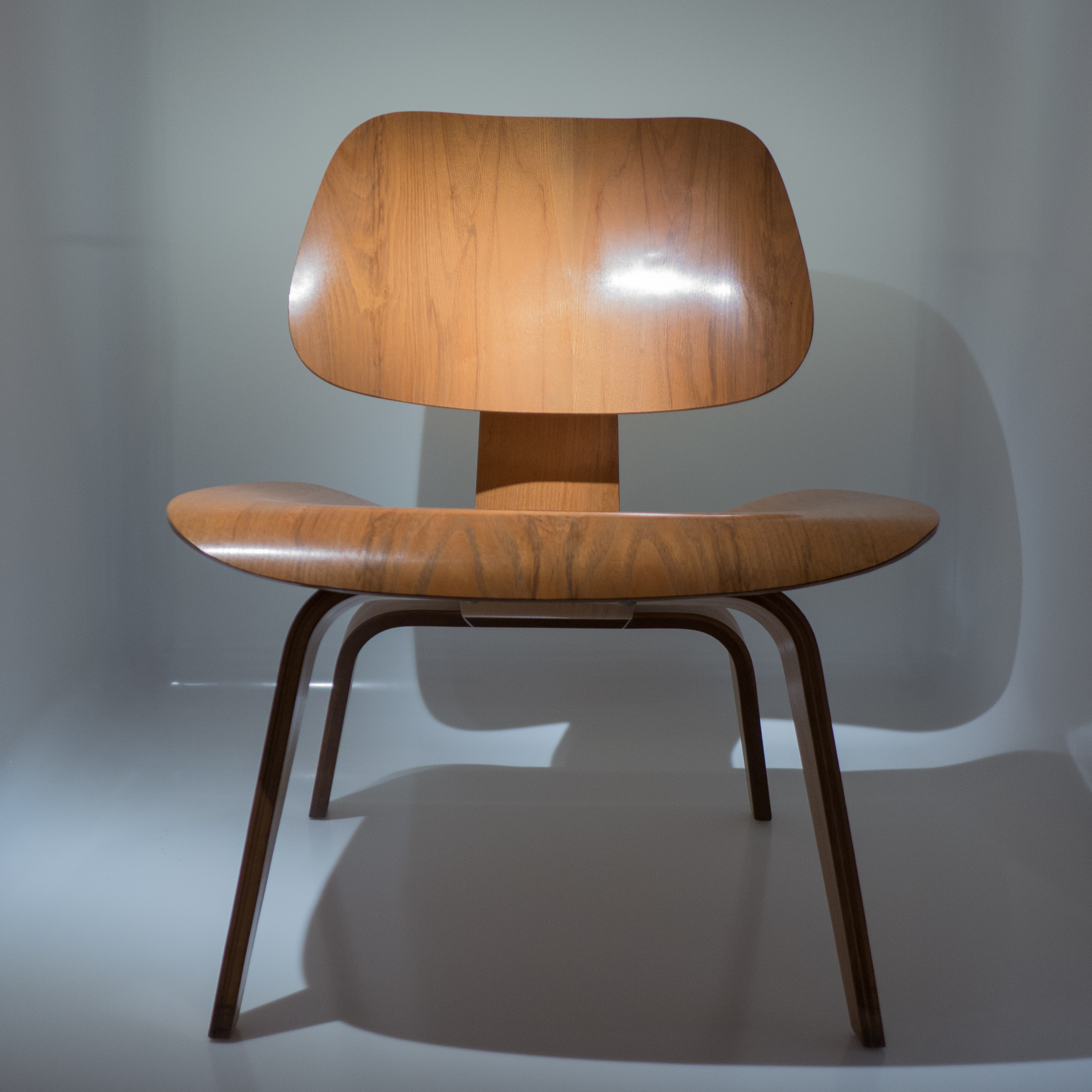
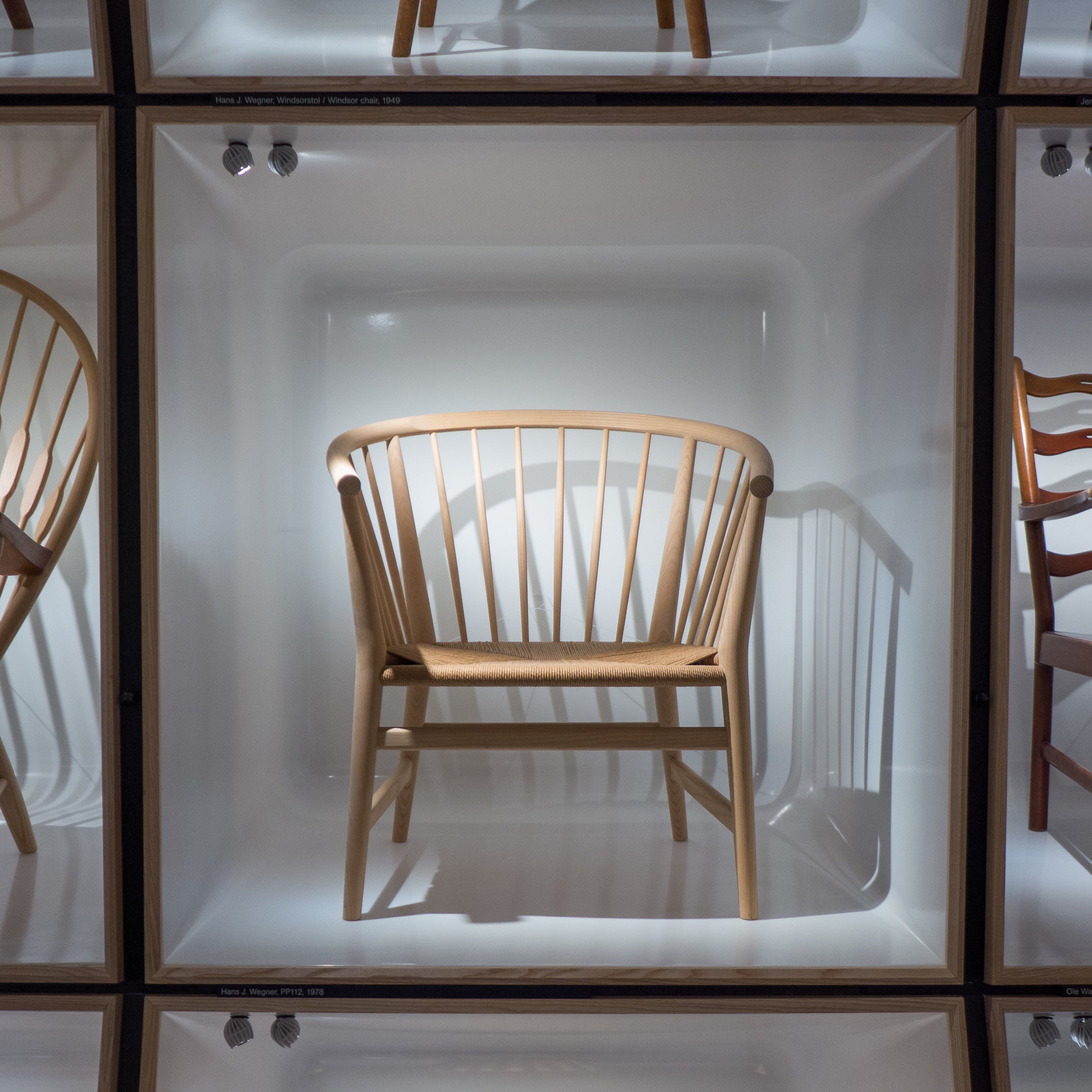
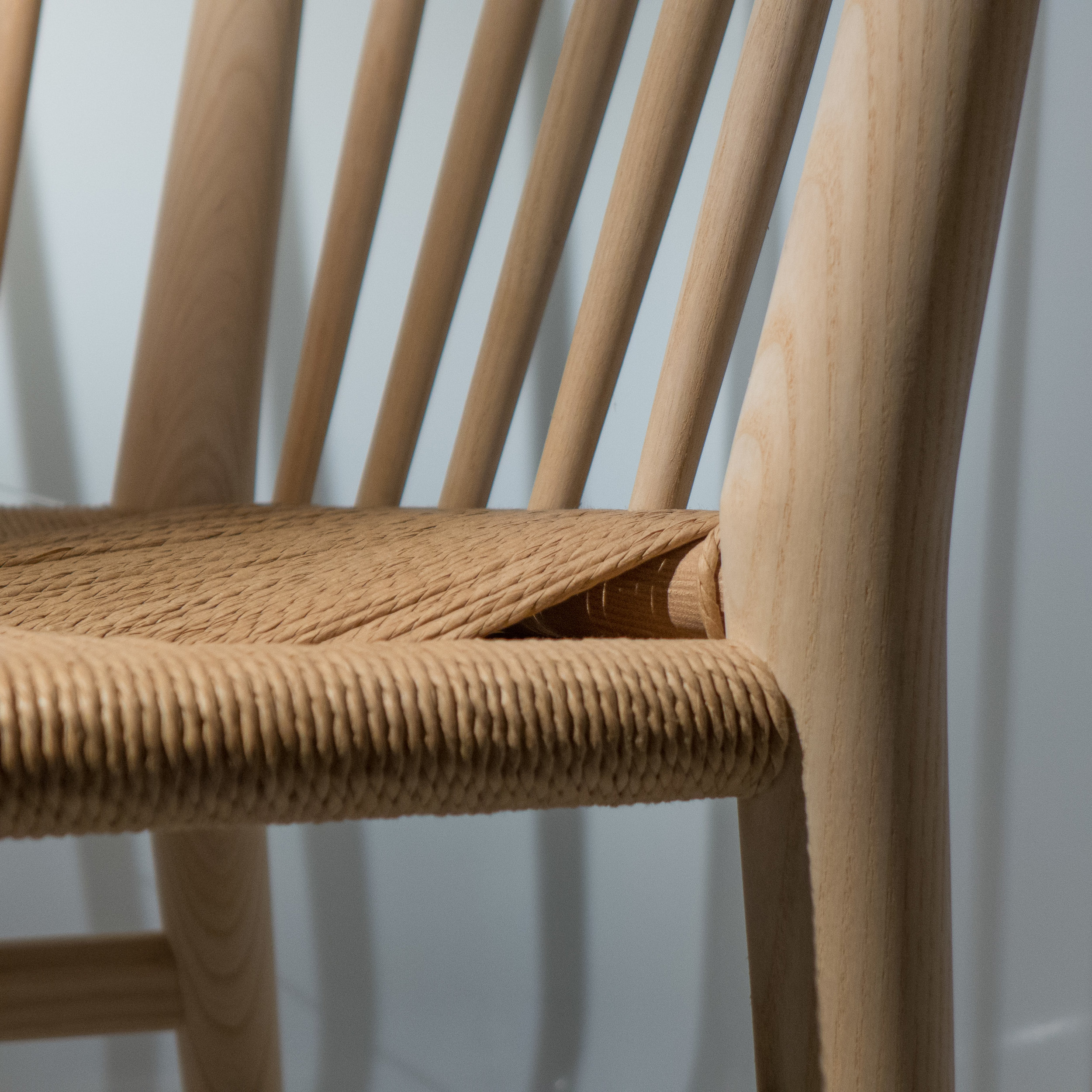
Galleries on the courtyard side of this range have also been rearranged.
The chairs were originally there - either in a line along the inner wall or arranged on a deep plinth against the window wall - but now a less densely-packed display has been moved to the centre of the main gallery so it is possible to see upholstered chairs and the larger recliners and so on from all sides.
The Danish Chair - an international affair Designmuseum Danmark
Designer: Boris Berlin of ISKOS-BERLIN Copenhagen
Curator: Christian Holmsted Olesen.
Graphic design: Rasmus Koch Studio.
Light design: Jørgen Kjær/Cowi Light Design and Adalsteinn Stefansson.
Graphic design: Rasmus Koch Studio.
